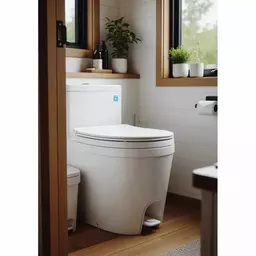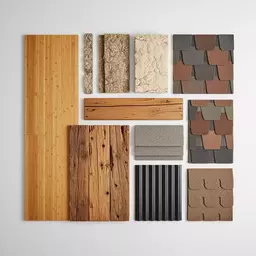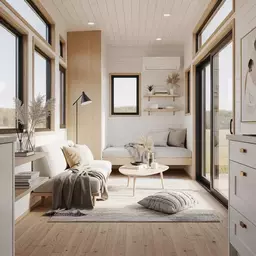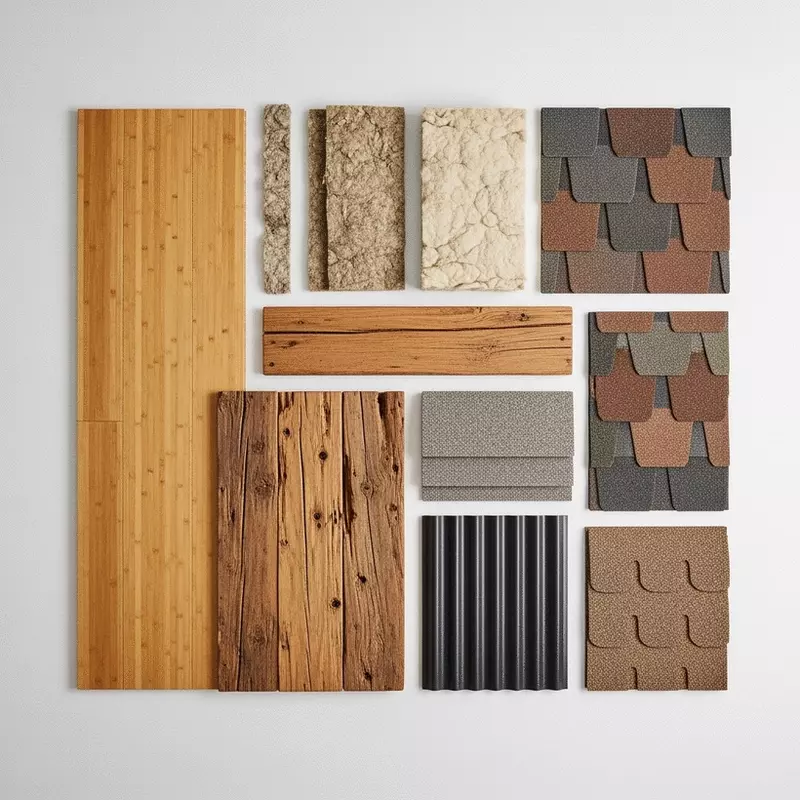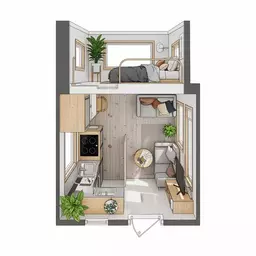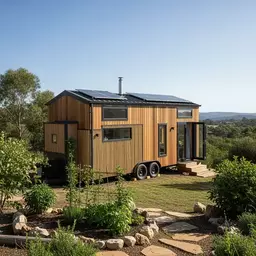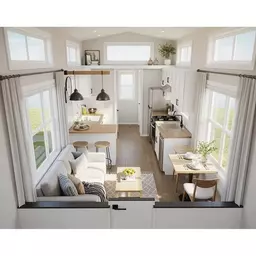Choosing Your Ideal Tiny House Plan
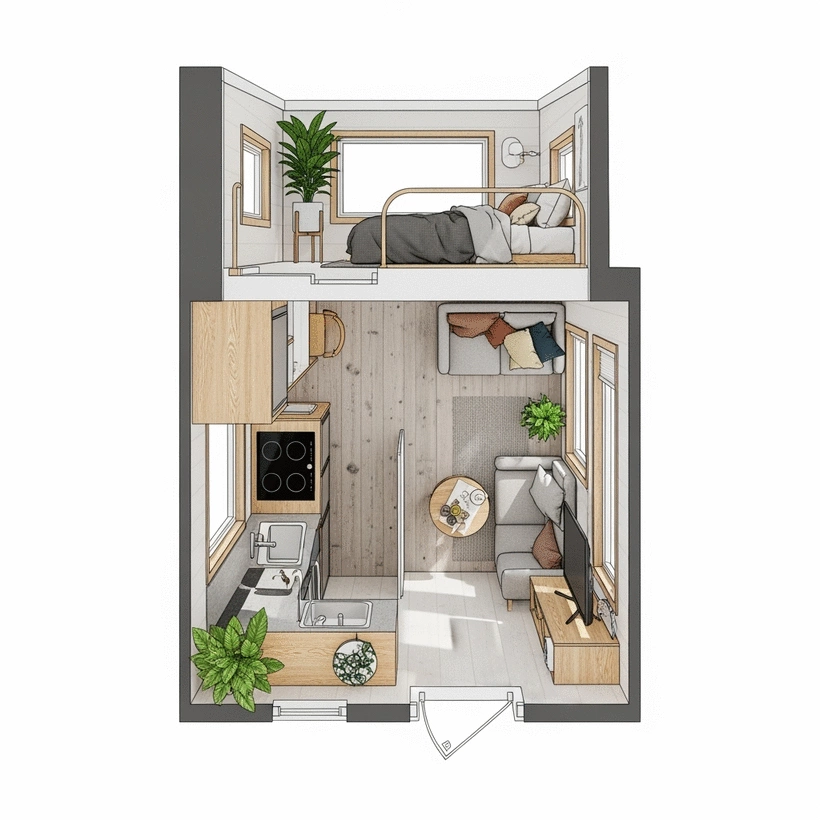
Are you ready to transform your living space into a tiny home that reflects your unique lifestyle? With the right insights and careful planning, you can create a compact sanctuary that embraces minimalism and sustainability.
What You Will Learn
- Understanding your daily routines and family dynamics is essential for a functional tiny home layout.
- Identifying personal preferences in design and functionality will help create a space that feels uniquely yours.
- Embracing minimalism not only declutters your space but also prioritizes experiences over possessions.
- Planning for pet accommodations ensures that your furry friends are comfortable in your tiny environment.
- Assessing local building codes and zoning regulations is crucial for a smooth tiny home project.
- Utilizing resources like design tools and community forums can enhance your understanding of tiny home possibilities.
- Engaging with the tiny home community provides support and inspiration throughout your journey.
Key Considerations for Your Tiny Home Journey
Understanding your needs, preferences, and the practicalities of tiny living is essential. This visual highlights the core areas to consider when designing your dream tiny home. For more inspiration on innovative layouts, explore our tiny home floor plans Australia 2025.
Assessing Needs & Dynamics
- Daily Routines
- Number of Occupants
- Pet Accommodations
Preferences & Requirements
- Design Styles
- Non-negotiable Features
- Adaptability Over Time
Minimalism & Sustainability
- Embrace What Matters
- Quality Over Quantity
- Multifunctional Design
Regulations & Resources
- Local Building Codes
- Online Design Tools
- Community Support
Understanding the Tiny House Lifestyle and Its Needs
Embracing the tiny house lifestyle is about more than just downsizing; it's a transformative journey that allows you to live more intentionally. At Luxe Tiny Homes, we believe that understanding your unique needs is essential to creating a space that not only suits your lifestyle but also resonates with the principles of minimalism and sustainability. Let's dive into the crucial aspects of assessing your daily routines, preferences, and the role minimalism plays in tiny living.
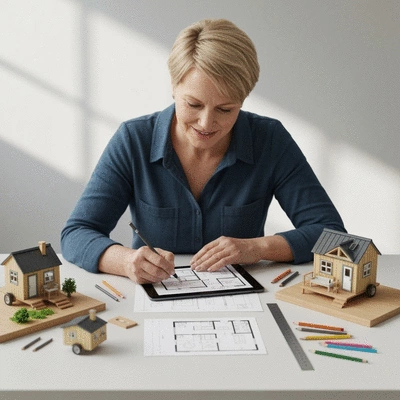
Assessing Your Daily Routines and Family Dynamics
Before diving into design, it's vital to reflect on your daily life. How do you and your family spend your time? Understanding your daily routines helps shape your tiny home’s layout and functionality. For instance, if you enjoy cooking, a well-designed kitchen space will be crucial. Alternatively, if you value quiet time for reading, incorporating a cozy nook is a must!
- What activities take place most often in your home?
- How many people will regularly be using the space?
- What common routines should the design accommodate?
As you ponder these questions, remember that each family is unique. Your tiny home should reflect your specific dynamics while encouraging harmony and connection.
Identifying Personal Preferences and Functional Requirements
Next, consider your personal preferences. This includes everything from aesthetics to functionality. Perhaps you love the warmth of wood finishes or the crispness of modern lines. Identifying these preferences can help guide your design choices and create a space that feels truly yours. Additionally, think about functional requirements. For example, certain appliances or furnishings may be essential for your lifestyle. Maximizing space is key in tiny homes, so consider maximizing space in tiny homes as you plan your interior.
- What design styles resonate with you?
- Are there specific features that are non-negotiable for your home?
- How will your space need to adapt over time?
By pinpointing these aspects, you’ll ensure that your tiny home is not just a place to live, but a sanctuary that reflects your identity.
The Role of Minimalism in the Tiny House Lifestyle
Minimalism is at the heart of tiny living. It encourages us to focus on what truly matters, stripping away excess and distractions. This philosophy isn't just about reducing possessions; it's about cultivating a lifestyle that values experiences over things. As someone passionate about sustainable design, I find that minimalism also aligns beautifully with eco-friendly living.
- Embrace what you love and let go of the rest.
- Prioritize quality over quantity in your belongings.
- Consider multifunctional designs that serve multiple purposes.
By integrating minimalism into your tiny home, you’ll create a peaceful environment that nurtures creativity and tranquility.
Important Considerations for Pet Accommodations in Tiny Spaces
If you have pets, accommodating their needs in your tiny space is crucial. They require their own space, just like you do! Consider how a pet's lifestyle will mesh with yours in a compact environment. You’ll want to make sure that your new home is functional for your furry friends as well.
- Designate a specific area for pet beds and toys.
- Incorporate storage solutions for pet supplies.
- Consider access to outdoor spaces for exercise and play.
By planning for your pets, you ensure that everyone in your household enjoys the benefits of tiny living!
Pro Tip
When designing your tiny home, think about integrating storage solutions that double as furniture. For instance, consider a bench that opens up for storage or a coffee table with hidden compartments. This not only maximizes space but also keeps your home organized and clutter-free, aligning perfectly with the principles of minimalism!
Key Insights into Choosing the Right Floor Plan
Choosing the perfect floor plan for your tiny home is a journey that intertwines your lifestyle preferences with practical considerations. Here at Luxe Tiny Homes, we understand how important it is to align your design choices with your daily routines and the unique climate of your area. Let's break down some key insights that can guide you in making the best decisions for your future tiny sanctuary!
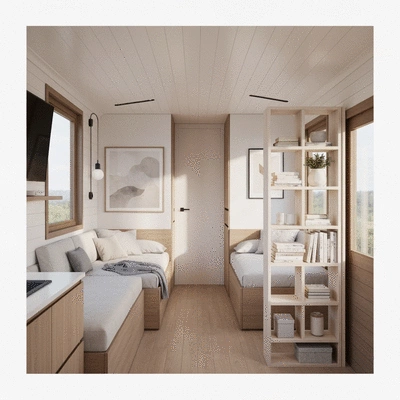
Summarizing Your Lifestyle and Climate Impact on Design Choices
Before diving into specific floor plans, it’s crucial to reflect on your lifestyle needs and how your local climate might influence those choices. Are you someone who loves entertaining guests? Or do you prefer a cozy, private space? Understanding these aspects can help tailor your design. Here are some considerations to keep in mind:
- Daily Routine: Identify how you spend your day. Do you work from home or enjoy outdoor activities?
- Family Dynamics: Take into account how many people will live in your tiny home and their needs.
- Climate Considerations: Recognize how the weather in your area might require specific features, like adequate insulation or ventilation.
By combining these elements, you can create a design that not only fits your lifestyle but also supports your living experience, making it both functional and enjoyable!
Finding Resources and Tools to Assist in Your Decision-Making
In the age of information, there are countless resources available to help you navigate your tiny home journey. From design software to community forums, you can find valuable tools that align with your vision. Some resources I recommend include:
- Online Design Tools: Websites like SketchUp or RoomSketcher can help visualize your floor plan.
- Social Media Groups: Join Facebook or Reddit groups focused on tiny homes for advice and inspiration.
- Blogs and Magazines: Resources like Luxe Tiny Homes often provide insightful articles and case studies.
Utilizing these tools will enhance your understanding of the possibilities and limitations of tiny house designs, making your decision-making process smoother.
Understanding Local Building Codes and Zoning Regulations
Finally, a crucial step before finalizing your floor plan is to familiarize yourself with local building codes and zoning regulations. Not only can these regulations affect your design choices, but they can also influence your overall timeline and budget. Here are some steps to help you navigate this aspect:
- Research Local Regulations: Check with your local council or municipality for tiny home regulations. For comprehensive information, consult our guide on Australian tiny home building rules.
- Consult with Professionals: Consider talking to architects or builders experienced in tiny home projects.
- Understand Zoning Laws: Know where tiny homes are permitted and any restrictions that may apply.
By being proactive in understanding these regulations, you can avoid costly mistakes and ensure your tiny home journey is smooth from the start!
Encouraging Thoughtful Decision-Making for Your Tiny House
Now that you've reflected on key insights for choosing your floor plan, let’s focus on making thoughtful decisions that honor your unique lifestyle and climate challenges.
Reflecting on Your Unique Requirements and Climate Challenges
As you contemplate your ideal tiny home, it’s essential to continuously reflect on your requirements. Think about how your design can adapt to climate challenges. What aspects can be enhanced with clever design solutions? This self-reflection will guide you toward creating a space that feels both comfortable and functional.
Taking Action: Next Steps for Creating Your Ideal Tiny Space
Are you ready to turn your tiny home dreams into reality? Here are some actionable steps to help you get started:
- Create a Vision Board: Collect images of tiny homes and features that resonate with you.
- Draft a Wish List: Write down must-have features and elements in your tiny home.
- Set a Timeline: Outline your goals and a timeline for completing your tiny home project.
Taking these steps will not only clarify your vision but also empower you to take the next steps toward building your ideal tiny space!
Exploring Community Resources for Tiny House Support
Lastly, don’t forget to tap into the vibrant community surrounding the tiny house movement. Many resources are available to support you along the way. Join local workshops, attend tiny home expos, or connect with others online. Here’s how you can get involved:
- Workshops: Participate in tiny house building or design workshops in your area.
- Meetups: Join local tiny house meetups to network with like-minded individuals.
- Online Forums: Engage with online communities for shared experiences and advice.
By immersing yourself in the tiny house community, you’ll gain not only knowledge but also friendships that can support you through your journey!
Frequently Asked Questions About Tiny Homes
- What is the most important factor when planning a tiny home?
- The most important factor is understanding your daily routines and family dynamics to ensure the layout and functionality meet your specific needs.
- How does minimalism apply to tiny home living?
- Minimalism in tiny home living encourages focusing on essential belongings, prioritizing quality over quantity, and utilizing multifunctional designs to create a clutter-free and intentional living space.
- What should I consider if I have pets in a tiny home?
- When planning for pets, consider designating specific areas for beds and toys, incorporating storage for pet supplies, and ensuring easy access to outdoor spaces for exercise.
- Why are local building codes and zoning regulations important for tiny homes?
- Local building codes and zoning regulations are crucial because they dictate where tiny homes can be placed, what design elements are permissible, and can significantly impact your project's timeline and budget.
- What resources are available to help with tiny home design?
- You can utilize online design tools like SketchUp or RoomSketcher, join social media groups and forums dedicated to tiny homes, and read blogs and magazines for inspiration and advice.
Recap of Key Points
Here is a quick recap of the important points discussed in the article:
- Reflect on your daily routines and family dynamics to shape your tiny home's layout and functionality.
- Identify personal preferences and functional requirements to create a space that feels uniquely yours. For more design planning, see our guide to starting your custom tiny home.
- Embrace minimalism by focusing on quality over quantity and incorporating multifunctional designs.
- Plan for your pets by designating areas for their needs and ensuring access to outdoor spaces.
- Consider lifestyle and climate when choosing the right floor plan for your tiny home.
- Utilize resources like design tools and community forums to assist in your decision-making process.
- Understand local building codes and zoning regulations to avoid costly mistakes.
- Engage with the tiny house community for support and shared experiences on your journey.
